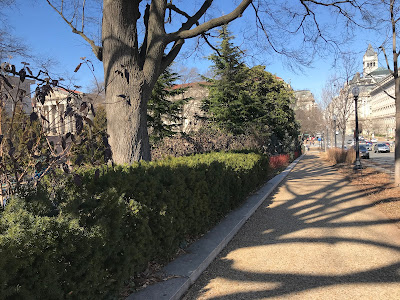Walking and Belonging
In his book The Walker: On Finding and Losing Yourself in the Modern City, Matthew Beaumont describes walking as s socially and psychologically meaningful activity. Authors make cities seem new and strange when they wander through them on foot. And they have their characters do the same.
So just as Charles Dickens ambled along the lanes of Victorian London, so too do some of his characters, including Mr. Humphreys of The Old Curiosity Shop. Apparently, Dickens walked for the same reason many of us do: to calm himself down, to ease tensions.
Beaumont examines city walking in the work of Edward Bellamy (Looking Backward), H.G. Wells (The Invisible Man) and others, illuminating both the texts and the walking in the process.
I take issues with one of Beaumont’s major points, though, which is to see walking as a symbol and a symptom of not belonging: the solitary nighttime stroller at odds with the world he lives in (and it often is a “he” since women’s nocturnal walking opportunities are more limited than men’s).
From my suburban vantage point, walking is an activity that encourages belonging because it engenders understanding. How can we care about a place that we do not know, and how can we know a place that we never see … except as it streams by outside our car windows?
